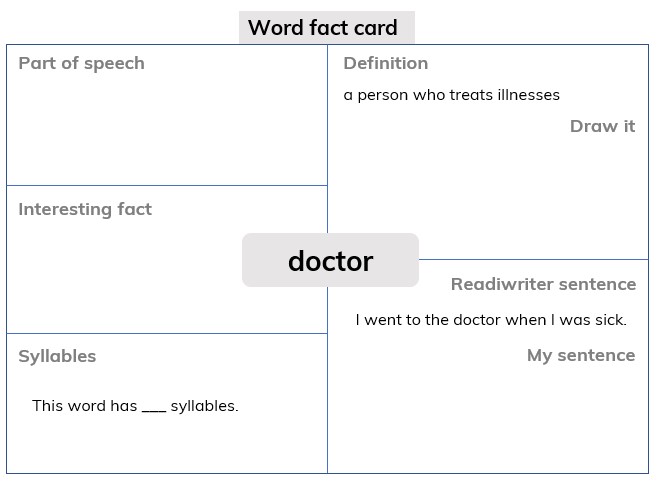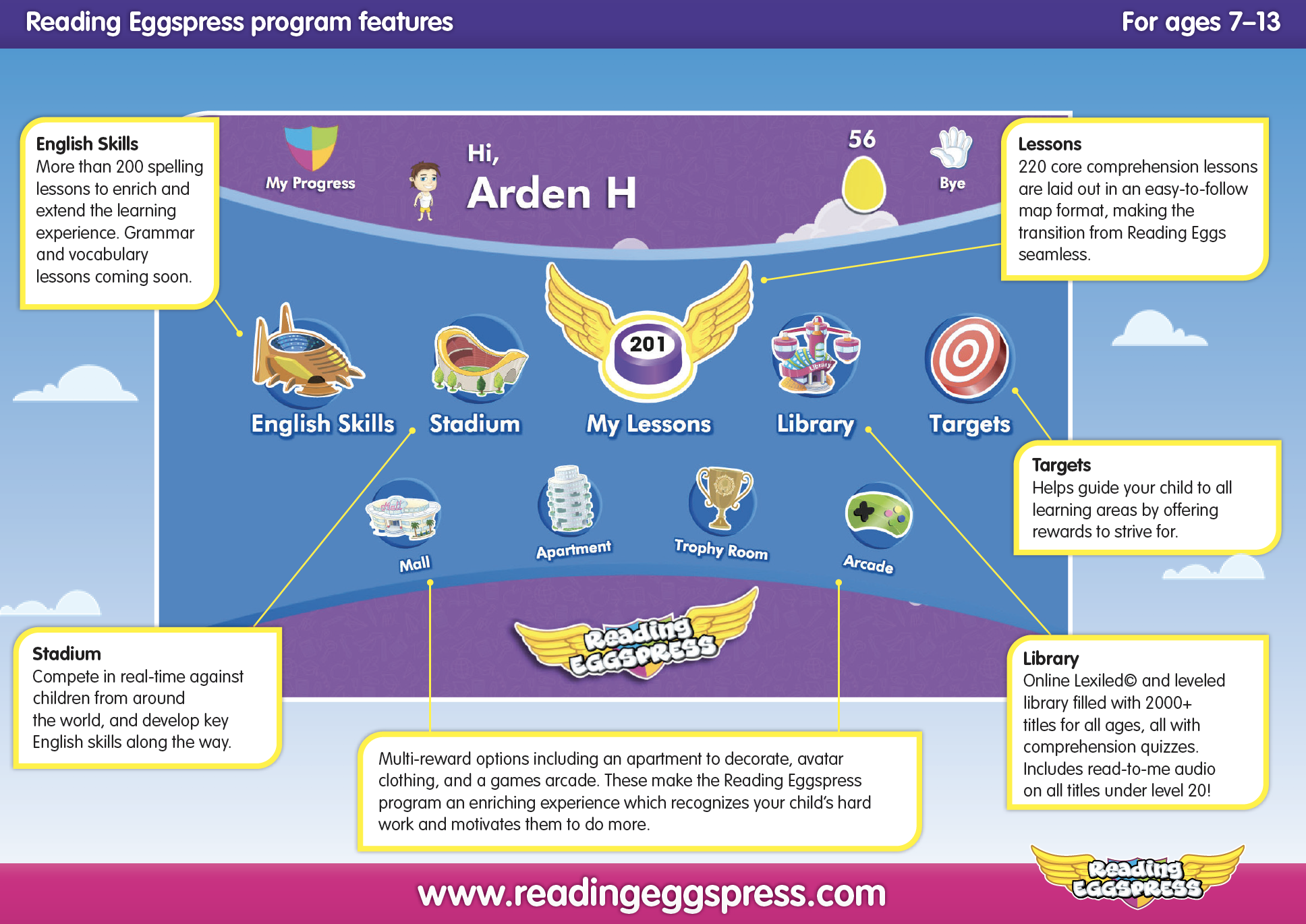
“Vocabulary size is a convenient proxy for a whole range of educational attainments and abilities – not just skill in reading, writing, listening, and speaking, but also general knowledge of science, history, and the arts.”
A wealth of words, by E. D. Hirsch Jr
Vocabulary is something we continue to learn and develop throughout our entire lives – an unconstrained skill. While some vocabulary is acquired implicitly through everyday interactions, it’s important to teach more complex and technical vocabulary explicitly. We can’t rely on fate, osmosis and exposure for students to learn the 50,000+ words they need to thrive in school and beyond.
Further, vocabulary is becoming more important in a world of digital dependency. Autocorrect may have a chance of picking up incorrect spelling, but it can’t be relied on to help you choose the word with the right meaning.
Teaching vocabulary is about context and repetition– what they need to know about the words they’re using, and using them multiple times.
But before we get onto that, here are some key things we have to understand to teach vocabulary:
The three tiers of vocabulary
For the past two decades, it has been acknowledged that there are three broad tiers of vocabulary. An awareness of these tiers is critical to assist teachers in selecting the right words to teach explicitly in their classrooms – from the first day of school to the last.
Tier 1
These are basic words of everyday language – high frequency words. With around 8000 word families in Tier 1, including words like ‘dog’, ‘good’, ‘phone’ and ‘happy’, these words do not generally require explicit teaching for the majority of students. However, explicit teaching is required to make the most of this level of vocabulary particularly for homophones and words with more than one meaning.
Tier 2
Tier 2 words are the words needed to understand and express complex ideas in an academic context. Tier 2 includes words like ‘formulate’, ‘specificity’, ‘calibrate’ and ‘hypothesis’. These words are useful across multiple topics and subject areas and effective use can reflect a mature understanding of academic language.
Tier 3
Tier 3 words aren’t used often and are normally reserved for specific topics or subjects – words like ‘orthography’, ‘morphology’ and ‘etymology’ in the field of linguistics, or ‘isosceles’, ‘circumference’ and ‘quantum’ for the world of mathematics and physics. Some of these words may also exist as a Tier 1 or 2 word but have a particular use and purpose as a Tier 2 word, such as ‘substitute’, ‘similarity’ and ‘expression’ in a mathematical context. These words must be taught explicitly in the context of their meaning and purpose in a particular unit of study.
Did you know? The Reading Eggspress Vocabulary program focuses on the critical Tier 2 and academic vocabulary terms that students need to understand to be able access the increasingly difficult texts they encounter. The lessons are organised in a systematic and easy to follow format with technology that adapts to student responses.

Learn more about Reading Eggspress (part of Reading Eggs) vocabulary program here
Vocabulary development by age
Students’ communication abilities, including their vocabulary, can vary immensely. However, there are certain milestones we can expect children to reach before starting formal schooling:
- 12 months: 2 words plus mummy/mommy and daddy (or equivalent in languages other than English)
- 18 months: 10-50 words
- 2 years: 300 words
- 5 years: 450 words
- 3 years: 1000 words
- 4 years: 2000 words
- 5 years: 5000 plus words
This early language acquisition is an essential platform for future learning. There is a huge body of evidence suggesting that deficient early vocabulary development is a strong marker for a continued difficulty in all aspects of schooling.
During the school years, vocabulary size must grow at a rapid pace in order to equip students for everyday, as well as academic, communication. By the age of 17, students are expected to know between 36 000 to 136 000 words.
So just what is it that allows some students to learn a staggering 100 000 more words than their peers?
Teaching vocabulary

Effective vocabulary instruction within the 6M Learning Framework includes opportunities to motivate, model, master, magnify and maintain vocabulary knowledge with meaningful feedback guiding the sequence of learning.
Motivate
Students need to understand the benefits of a rich vocabulary knowledge. As with all teaching, some students may be naturally curious, while others will need to be coaxed into the journey. Some tips and tools for enhancing motivation are:
- Take the time to demonstrate the value of a rich vocabulary knowledge
- Make word exploration an integral part of classroom culture
- Create a word-rich environment
- Find puns, jokes and other comedic devices to add engagement to word studies, especially those that humorously interchange multiple meanings
- Designate a word of the week with a challenge to use it creatively in that week’s work
Model
In an explicit approach to vocabulary instruction, teachers should model the skills and understanding required to develop a rich vocabulary knowledge.
Say the word carefully. Pronunciation is critical to allow students to make strong connections between written and spoken language. Use syllabification to assist in articulating each part of the word.
Write the word. There is a strong correlation between spelling and vocabulary. To allow students to access their vocabulary in both passive and active contexts, they must be equipped to spell new vocabulary.
Give a student-friendly definition. The concise nature of dictionaries means they require significant vocabulary knowledge to interpret. Simply providing students access to dictionaries and thesauruses will not necessarily give them the information they need to understand the meaning of the word. Provide a definition that is meaningful for students, their experiences and their existing vocabulary knowledge.
Give multiple meaningful examples. Use the word in sentences and contexts that are meaningful to students. But don’t stop at one! Provide a wide range of examples to allow everyone to connect and relate to the word.
Ask for student examples. It may be valuable to have students attempt to articulate their own examples of the word in context. By including this in the explicit teaching phase, there are opportunities to clarify understanding when words have multiple meanings and deal with any misconceptions.
Master
Provide opportunities for students to master an understanding of new vocabulary in context through hearing, saying, reading and writing.
Using words is the best way to remember them. The following methods can help learners to consolidate their vocabulary knowledge:
Show students how to recognise new words
The best way to help students to remember and retain the new words they’re introduced to is to connect it with an object in the real world. Pictures and flashcards are good, but real-world items are even better. This can get difficult with more abstract words, but by dedicating more time and thought, the image or object used, and your explanation of it, will help build students understanding.
Reinforce their remember new words
After a word has been introduced, we want students to see it at least 10 more times so it sticks. Activities like ‘fill in the blank’ and ‘word bingo’ help students make strong connections between the introduced words.
Have them use their new words
After new words have been introduced, students are ready to find the ways they can use these words to make meaning. Activities like using the word in a sentence, mind maps, fill in the blanks (with no options) develop students’ use of words as tools for meaning and communication.
Graphics organisers
A simple graphic organiser can be an effective method to help students master their knowledge of new words.


Magnify
Magnify vocabulary understanding through a word rich environment. Create a classroom where words are valued. Provide continued opportunities to explore words at a deep level.
- Explore word origins
Investigate the etymology of words and help students make connections within and between words. Understanding of common word parts helps learners to grasp meanings, even of words they have not encountered before.Create word families based on a particular etymological feature. For example, find words with ‘aqua’ or ‘hydra/o’ in their spelling – both referring to water. Predict the meanings of these words based on their smaller parts. - Explain the word’s connotation
This is the relationship between the word and the feelings about it, whether positive, neutral or negative. Understanding how words can be interpreted enables students to use them with greater precision.Try compiling a word scale. Place a word on one end of the scale and a word with opposite meaning or intensity at the other. For example, if students are struggling to use words instead of ‘said’, place the word ‘whisper’ at the lower end and ‘bellow’ at the higher end. Students work together to build the scale, searching for synonyms like ‘shout’, ‘yell’, ‘plead’, ‘intone’ and placing them at appropriate points on the scale. - Explaining where and when the word is or isn’t used
This can be anything from a word’s formality to its datedness. You might use ‘loo’ at home, ‘toilet’ in public or ‘lavatory’ at the Mayor’s Ball, and ‘ball’ would be outdated. This helps students understand how words can make people sound. Try demonstrating this by writing an inappropriately informal text to highlight the importance of word choice. Alternatively, write an overly formal text to convey a simple, friendly message. - Building the relationship from words to other words
This is how students understand what words have the same, similar, opposite or related meanings. Taking them through words synonyms, antonyms and words or concept that build off words helps them develop their lexical stores. Set aside time for word study. Provide graphic organisers to assist learners to make comparisons and build connections. - Showing what words occur together
This is called ‘collocation’ – it’s why we say ‘see the big picture’ instead of ‘see the tall picture’ or 10 apples is fewer than 15 apples rather than less. Collocation must occur in context, so shared reading is an excellent forum for this sort of word study. But also have a bit of fun by using synonyms to create ‘nearly but not quite’ versions of well-known sayings. - How affixes change meaning
Most words can be changed by adding affixes – prefixes before the word and suffixes after the word. But a rich vocabulary can be developed by understanding the purpose of prefixes and suffixes and how they impact part of speech and inform meaning.To help students get to grips with affixes and how they can change meaning, select a ‘friendly’ root word and explore all of the word building creations that are possible. For example, the word ‘social’ can be added to create: socialise, socially, unsocial, antisocial, unsociable, etc.
Maintain
Maintain learning through repeated practice and revision.
There are many great game ideas to help you find creative ways to revisit learning after one day, one week and one month.
Bonus strategies for teaching vocabulary

1. Word of the day
Create a daily roster for students to share a newly discovered or unusual word with the class. They can get creative with the definition too by acting it out, giving synonyms, or doing a Pictionary style drawing on the board.
2. Creative writing
Compile the week’s ‘words of the day’ and task students with writing a story that uses as many of them as possible. They’ll learn how to use their new vocabulary in context.
3. Class glossary
Build up a list of unfamiliar words the class encounters when reading a text or studying a topic. Each student can choose a word and create a glossary page for it, complete with a definition, pronunciation guide, sentence example, mnemonic (memory aid), and an image that sums up its meaning.
The challenges of teaching vocabulary
Explicit teaching of vocabulary is frequently overlooked in the busyness of the typical classroom.
Many teachers believe that vocabulary can be acquired without the need to provide targeted instruction. Others teachers are unaware of the need to teach vocabulary explicitly. Some lack the training or understanding of the skills involved. And some are simply overwhelmed by the competing voices of education priorities.
In a world where information is always available, some teachers simply provide access to the resources that students can use to build their vocabulary independently – such as dictionaries, thesauruses and online tools.
And while the end goal is autonomous and independent learners, students already struggling with a low vocabulary need significant support and explicit teaching to use these tools effectively.
The complexity of the English language presents homophones, homographs, polysemous words (words with multiple meanings) as well as the confusion of everyday words being used in idiomatic and figurative contexts.
It is essential for teachers to support students in their acquisition of a growing vocabulary. But to do so, they must themselves be equipped with a rich vocabulary and a deep understanding of the richness and value of words.
Looking to build your students’ vocabularies?

Reading Eggspress Lessons use a combination of teaching videos, engaging online activities and games with printable worksheets and assessment tests. The program includes a variety of instructional strategies including: word building, word sorts, word mapping, morphemic analysis, context reading, word consciousness and deep understanding and close reading of text.

Build your students’ vocabularies with
Reading Eggspress today
Sources
The Three Tiers of Vocabulary Development – ASCD.org
Concept Development and Vocabulary – Education Victoria








